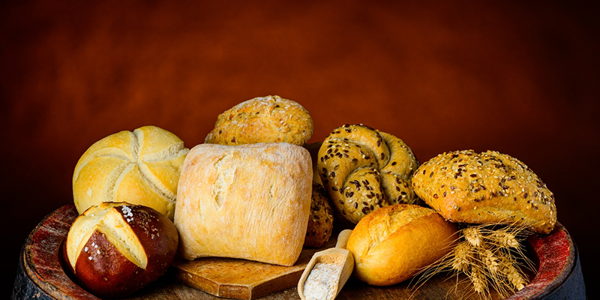How Are Regional and Artisanal Foods Making A Comeback?
Experts have noticed a noticeable shift in the food industry as consumers increasingly turn their backs on mass-produced, homogenized products, favouring regional and artisanal foods. But what is driving this comeback? How are these foods capturing the hearts and palates of people across the globe?

In this blog, we will discuss the comeback of regional and artisanal foods, exploring the rise of artisanal food popularity factors and their impact on our food culture.
Factors Driving the Comeback
Consumer Demand for Authenticity and Quality
Modern consumers are increasingly seeking foods offering genuine flavours and high-quality ingredients. This demand for authenticity is a crucial driver behind the resurgence of regional and artisanal foods, as people crave products with unique stories and traditional craftsmanship.
Increased Awareness of Food Origins and Production Methods
With growing awareness about where food comes from and how it's made, consumers are more informed and selective. They prioritize transparency and ethical production practices, often choosing regional and artisanal foods that uphold these values.
Health and Nutritional Benefits
Many regional and artisanal foods are perceived to be healthier and more nutritious than their mass-produced counterparts. The focus on natural ingredients, minimal processing, and traditional preparation methods aligns with the increasing consumer interest in wholesome, nutrient-rich foods.
Environmental and Sustainability Considerations
Consumers seek food options with a lower ecological footprint as environmental concerns rise. Regional and artisanal foods often promote sustainable farming practices, local sourcing, and reduced food miles, making them an attractive choice for eco-conscious individuals.
The Role of the Farm-to-Table Movement
Explanation of Farm-to-Table Principles
The farm-to-table movement emphasizes sourcing ingredients directly from local farms and producers to make the food fresh, seasonal, and sustainably grown. This approach promotes a direct connection between consumers and the origins of their food, fostering greater transparency and trust in the food supply chain.
Impact on Local Economies and Small-Scale Farmers
Farm-to-table practices have a significant positive impact on local economies and small-scale farmers. By prioritizing locally sourced ingredients, restaurants and consumers support local agriculture, helping to sustain and grow small farms. The economic boost strengthens rural communities, creates jobs, and preserves farmland, contributing to a more resilient local economy.
Success Stories and Notable Farm-to-Table Restaurants
Numerous restaurants worldwide have embraced the farm-to-table philosophy, becoming champions of local produce and artisanal foods. Notable examples include:
● Blue Hill at Stone Barns (New York, USA): Known for its commitment to sustainability and farm-fresh ingredients, Blue Hill sources much of its produce from its farm and other local suppliers.
● Chez Panisse (California, USA): Founded by Alice Waters, this pioneering restaurant has been at the forefront of the farm-to-table movement since the 1970s, advocating for organic, local ingredients.
● Noma (Copenhagen, Denmark): Renowned for its innovative use of Nordic ingredients, Noma has built strong relationships with local foragers, farmers, and fishermen, setting a global standard for farm-to-table dining.
Regional Foods Comeback Trends and Artisanal Food Popularity Rise – The Revival
Importance of Preserving Culinary Heritage
Preserving culinary heritage is necessary for maintaining cultural identity and historical continuity. Traditional recipes and cooking techniques are more than just methods of preparing food; they represent communities' history, values, and stories. With the comeback of regional foods and reviving and preserving these culinary practices, we honour our ancestors and keep cultural traditions alive for future generations.

Examples of Revived Traditional Recipes
Many traditional recipes that had fallen out of favour are now being rediscovered and celebrated. For instance:
● Sourdough Bread: Once a staple in many cultures, sourdough bread is resurgent thanks to its rich flavour and health benefits. Artisans worldwide are embracing traditional fermentation methods to create this bread.
● Kimchi: This Korean fermented vegetable dish has gained international popularity, with many chefs and home cooks experimenting with traditional and modern variations.
● Handmade Pasta: In Italy, there's a renewed interest in crafting pasta by hand, using age-old techniques passed down through generations, resulting in a superior taste and texture compared to industrially produced pasta.
Influence of Culinary Tourism and Food Festivals
Culinary tourism and food festivals play a significant role in reviving traditional recipes and techniques. These events attract food enthusiasts who seek authentic culinary experiences, providing a platform for local chefs and artisans to showcase their heritage dishes. For example:
● The Taste of Chicago: One of the largest food festivals in the world, it highlights local and regional foods, allowing visitors to experience traditional recipes firsthand.
● Salone del Gusto (Italy): Organized by the Slow Food movement, this event celebrates traditional foods and sustainable agriculture, encouraging the preservation of culinary heritage.
Marketing and Branding of Artisanal Foods
Effective Marketing Strategies for Regional and Artisanal Products
Marketing regional and artisanal foods effectively requires a focus on authenticity, storytelling, and quality. Key strategies include:
● Highlighting Provenance: Emphasize the ingredients' origin and the traditional production methods to appeal to consumers' desire for authenticity.
● Storytelling: Share the stories of the producers, the history behind the products, and the cultural significance. This creates an emotional connection with consumers.
● Quality Assurance: Emphasize the superior quality and unique flavours of artisanal products, often supported by certifications or awards.
● Sustainability Messaging: Highlight sustainable practices and ethical production methods to attract environmentally conscious consumers.
Role of Social Media and Online Platforms
Social media and online platforms are powerful tools for marketing and branding artisanal foods. They provide direct channels to reach and engage consumers, share content, and build brand loyalty. Key approaches include:
● Visual Storytelling: Use high-quality images and videos to showcase the beauty and craftsmanship of artisanal products.
● Engagement and Interaction: Engage with consumers through comments, live sessions, and interactive content to build a community around the brand.
● Influencer Partnerships: Collaborate with food bloggers, chefs, and influencers who share the brand’s values to reach a wider audience.
● E-commerce Integration: Leverage online marketplaces and direct-to-consumer sales platforms to make products accessible to a global audience.
Case Studies of Successful Artisanal Brands
Several artisanal brands have successfully used these marketing and branding strategies to build solid and recognizable identities:
● Mast Brothers Chocolate (Brooklyn, USA): Known for their bean-to-bar chocolate, Mast Brothers emphasize their artisanal production process, sourcing single-origin cacao beans and handcrafting chocolate. Their distinctive packaging and storytelling about their craftsmanship have set them apart in the market.
● McClure's Pickles (Detroit, USA): This family-owned business markets artisanal pickles by focusing on its heritage recipes and high-quality ingredients. McClure's has built a loyal customer base through engaging social media content and transparent storytelling.
● Tiptree (Essex, UK): Tiptree jams and preserves have been crafted by Wilkin & Sons since 1885. Their branding emphasizes traditional methods and local sourcing, while their successful use of social media and e-commerce platforms has helped them reach a global market.
Conclusion – The Comeback of Regional Food
The resurgence of regional and artisanal foods is a testament to the growing consumer desire for authenticity, quality, and sustainability. The revival is about the food and the stories, heritage, and communities behind them.
As we continue to prioritize these values, regional and artisanal foods will undoubtedly play a significant role in shaping the future of our food culture. By supporting these products, consumers consciously honour tradition, promote sustainability and enjoy exceptional flavours.


